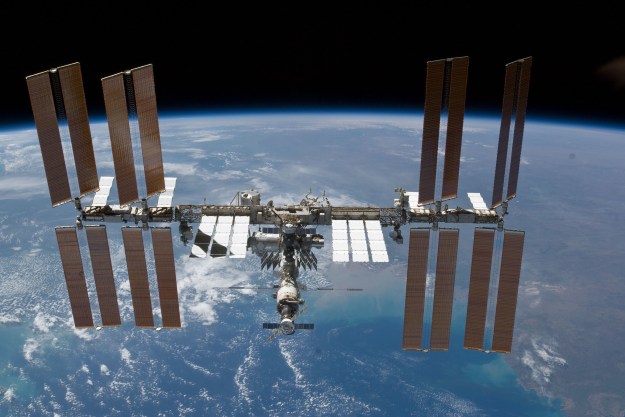For crewmembers living and working on the International Space Station (ISS), dinner time doesn’t always involve squeezing sloppy foodstuffs from a small silver packet.
These days they can be a little more adventurous with their culinary efforts, as demonstrated this week by current ISS crew member Oleg Novitskiy.
The Russian cosmonaut shared a photo of a tortilla-based meal that he knocked together during his current stay on the orbiting outpost.

While some of you may look long and hard at Novitskiy’s dish and ask incredulously, “Is he really going to eat that?” others may be immediately drawn to the binder clips that also feature in the photos.
Space-savvy folks will of course immediately realize that the clips are playing a vital role in preventing the lightweight tortillas from floating off in the station’s microgravity conditions. For anyone wondering why the tortilla in the photo on the right hasn’t floated away, we can assume that the mass of mustard and ketchup on its underside is sufficiently sticky to keep it firmly in place.
Although a flyaway tortilla is unlikely to cause a catastrophic incident aboard the ISS, it would surely be an annoyance for the hungry astronaut who wants to eat it. So out come the clips.
Retweeting the photo, fellow crew member Thomas Pesquet joked, “Space … the only place where we cook with binder clips.”

Novitskiy hasn’t made any further comments about the tortilla, but we’re assuming it went down a treat.
The ingredients for the Russian’s meal will have been sent to the ISS on spacecraft supply missions. However, in recent years astronauts have been working on cultivating various vegetables aboard the station, some of which they’ve been able to add to their own space meals.
NASA and its counterparts are keen to experiment with growing different types of plants on the space station as this will be the main way of sustaining crews on longer missions into deep space.
Researchers have also explored the idea of transforming human waste into food for long-duration missions, though it’s a safe bet that astronauts would prefer anything but that.
Editors' Recommendations
- Crewed Soyuz launch to space station suffers rare late abort
- How to watch SpaceX Crew-8 launch to the space station tonight
- Watch this astronaut’s ‘space waltz’ on the ISS
- Russian cosmonaut breaks record for time spent in space
- SpaceX needs good weather for Wednesday’s crewed launch. Here’s the forecast


